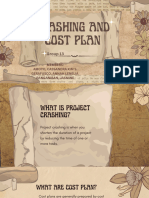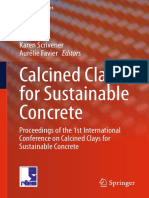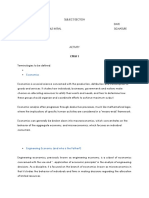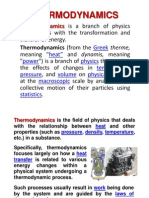0 ratings0% found this document useful (0 votes)
233 viewsThe Superstructure
The Superstructure
Uploaded by
Nelson GonzalezTonias
Copyright:
Attribution Non-Commercial (BY-NC)
Available Formats
Download as PDF, TXT or read online from Scribd
The Superstructure
The Superstructure
Uploaded by
Nelson Gonzalez0 ratings0% found this document useful (0 votes)
233 views554 pagesTonias
Copyright
© Attribution Non-Commercial (BY-NC)
Available Formats
PDF, TXT or read online from Scribd
Share this document
Did you find this document useful?
Is this content inappropriate?
Tonias
Copyright:
Attribution Non-Commercial (BY-NC)
Available Formats
Download as PDF, TXT or read online from Scribd
Download as pdf or txt
0 ratings0% found this document useful (0 votes)
233 views554 pagesThe Superstructure
The Superstructure
Uploaded by
Nelson GonzalezTonias
Copyright:
Attribution Non-Commercial (BY-NC)
Available Formats
Download as PDF, TXT or read online from Scribd
Download as pdf or txt
You are on page 1of 554
Access Engineering
The Superstructure
Printed for hernandez_84472@students. pupr. edu
3. The Superstructure
Section Overview
This section provides a detailed look at the various elements that comprise
a highway bridge superstructure. Different types of superstructures are
discussed along with many of the design, maintenance, and rehabilitation
issues affecting them. Design examples for commonly used superstructure
elements are provided to give the reader an understanding of principal
superstructure design fundamentals.
A superstructure can be thought of as the conduit that carries a roadway
over a crossing. Like any other bridge component, the superstructure is
comprised of many elements. In the bridge design profession, no other
component elicits so much discussion, and even downright controversy, as to
the type of elements to be utilized in construction. The structural and
geometric complexities of the superstructure component make it one of the
most challenging design problems in a bridge engineering project.
In this section we will examine the various types of superstructures and the
different elements that comprise them. While it would be impossible to cover
every permutation of superstructure types that are in use, this section will
attempt to provide the reader with fundamentals behind several of the
common superstructure configurations presently being used in highway
networks around the world.
Printed for hernandez_84472@students.pupr. edu
3.1. SUPERSTRUCTURE TYPES
The type of superstructure chosen for a bridge can be based on a variety of
factors ranging from maintenance considerations to personal preference.
Specifically, some of the commonly used criteria in selecting the type of
superstructure to be used are
* Material function and availability
+ Construction cost
+ Speed of construction and constructability
* Design complexity
* Maintenance costs and life expectancy
+ Environmental concerns
+ Aesthetics
Where there are no steadfast rules governing which of the factors listed
above is more important than the other, one certainty is that the use of
superstructure types varies geographically. Because of the way highway
systems such as the U.S. Interstate developed, bridges tend to come into an
area en masse (see Section 1.2). Once a particular type of superstructure
gains acceptance in a geographic region, it develops a certain critical mass
that is difficult to alter in a different direction. Although no transportation
system is homogeneous, there will definitely exist a predominance of one
type of superstructure system.
WIDE-FLANGE stringers vary from a standard Lbeam cross section in
several ways. As shown below, the -beam has a tapered flange where the
wide flange is orthogonal to the web, with the top face parallel to the
bottom face. As the name would indicate, the flange width on a wide-flange
stringer is greater than that of an Lbeam. The beam, however, has a
thicker web. The small flange width of the -beam, combined with the
inefficiency of material in its web, has made it unattractive to designers. In
the AISC specifications, wide-flange stringers are referred to with the W
designation and l-beam stringers with an S.
FLANGE
WITH TAPER
FLANGE WITH
PARALLEL
FACES
WIDE FLANGE 1 BEAM
‘W SHAPE S SHAPE
The types of superstructures also change with the bridge span lengths. Each
type of superstructure has span limitations beyond which it will become
uneconomical.
Superstructures generally vary by support type (simply supported or
continuous), design type (slab-on-stringer, arch, truss, etc.), and material
type (steel, concrete, timber, etc.). Obviously there are a variety of
combinations of the above. For example, a designer could choose to use a
slab-on-stringer superstructure with either steel or concrete girders. This
superstructure could be simply supported or continuous, and so on.
Discussed below are the major types of superstructures and their principal
advantages and disadvantages which affect their design, construction, and
maintenance.
Printed for hernandez_84472@students,pupr. edu
3.1.1. Steel Superstructures
The two principal materials utilized in superstructure construction are steel
and concrete. Materials such as timber (discussed later) and aluminum are
also utilized to a lesser extent. When compared to concrete, steel has the
advantage of lighter weight and more rapid construction. Steel also lends
itself well to prefabrication at the factory which reduces the amount of field
labor for operations such as bolting, welding, etc. Recent advancements in
fabrication methods and materials, especially with the introduction of
weathering steel, have made steel much more competitive with concrete.
You might also like
- IS 3370 (Part 1) - 2021Document28 pagesIS 3370 (Part 1) - 2021Praveen Agarwal95% (20)
- Crashing and Cost PlanDocument21 pagesCrashing and Cost PlanRolandNo ratings yet
- Civil Engineering Dissertation TopicsDocument1 pageCivil Engineering Dissertation Topicsfai prncs100% (1)
- Fibre Cement BoardsDocument30 pagesFibre Cement Boardsandrefaccindasilva100% (2)
- Calcined Clays For Sustainable Concrete Karen Scrivener, AurÇlie Favier, 2015Document552 pagesCalcined Clays For Sustainable Concrete Karen Scrivener, AurÇlie Favier, 2015Débora BretasNo ratings yet
- Kkibs Brochure - UnlockedDocument20 pagesKkibs Brochure - UnlockedSäbrinä ShukrìNo ratings yet
- Lecture 6. Borrow Pit MethodDocument15 pagesLecture 6. Borrow Pit Methodmarktyz26No ratings yet
- BMT LAB NEW Final111111 PDFDocument85 pagesBMT LAB NEW Final111111 PDFmohanNo ratings yet
- Introduction To HighwaysDocument4 pagesIntroduction To HighwaysAakash GuptaNo ratings yet
- Ubc 97Document30 pagesUbc 97AdnanRasheedNo ratings yet
- Ce 156Document4 pagesCe 156Teddy UlsNo ratings yet
- Exam 1 SolutionDocument5 pagesExam 1 SolutionIñigoAlberdiNo ratings yet
- Sieve AnalysisDocument3 pagesSieve AnalysisBibhuti B. Bhardwaj100% (1)
- Framing PDFDocument4 pagesFraming PDFJizelle JumaquioNo ratings yet
- Civil Engineering Code of Ethics Fundamental PrinciplesDocument4 pagesCivil Engineering Code of Ethics Fundamental PrinciplesMJ JessaNo ratings yet
- 14 - (Columns) Design of Sections of Columns (2016)Document79 pages14 - (Columns) Design of Sections of Columns (2016)Nadeem HassoonNo ratings yet
- Thesis ContentDocument39 pagesThesis ContentSunshine Dangkeo50% (2)
- Soil PropertiesDocument15 pagesSoil PropertiesAbdur Rahman100% (2)
- Module 1 - Index Properties of SoilDocument36 pagesModule 1 - Index Properties of SoilAdrian SinohinNo ratings yet
- External Girth 42000 MMDocument3 pagesExternal Girth 42000 MMSalman FarisNo ratings yet
- Ce40 CPR1Document8 pagesCe40 CPR1Erwin Jed RachoNo ratings yet
- Lec #19 (Permeability Thru Stratified Soils)Document24 pagesLec #19 (Permeability Thru Stratified Soils)Muhammad Irfan100% (1)
- Gravity Dam Design and Analysis: - Dam/reservoir Site Selection - Reservoir CapacityDocument22 pagesGravity Dam Design and Analysis: - Dam/reservoir Site Selection - Reservoir CapacityHabtamu HailuNo ratings yet
- Exp 1 Ce161pDocument11 pagesExp 1 Ce161pLiza LeeNo ratings yet
- Connections 1Document26 pagesConnections 1Jeiel ValenciaNo ratings yet
- Sumande Cedrix Cs01ce195-2Document3 pagesSumande Cedrix Cs01ce195-2Cedrix SumandeNo ratings yet
- Types of BridgesDocument25 pagesTypes of BridgesAkhil V Sukumar100% (1)
- A Study On Steel Fiber Reinforced Normal PDFDocument5 pagesA Study On Steel Fiber Reinforced Normal PDFZindagiDeeNo ratings yet
- PertDocument6 pagesPertJeffrey SantanderNo ratings yet
- Literature Review Footbridge GuideDocument99 pagesLiterature Review Footbridge GuideAlexis CabauatanNo ratings yet
- CE142P-2 / E01 Engr. Edward Monjardin 01-09-21 01-12-21: Jingona, Fatimah Rahima TDocument6 pagesCE142P-2 / E01 Engr. Edward Monjardin 01-09-21 01-12-21: Jingona, Fatimah Rahima TFatimah Rahima Jingona100% (1)
- Construction Methods PDFDocument54 pagesConstruction Methods PDFMohannad S ZebariNo ratings yet
- Lecture 5 Effects of Soil On Ground MotionDocument45 pagesLecture 5 Effects of Soil On Ground MotionJomar LampitokNo ratings yet
- Mapua University: Experiment No. 1Document7 pagesMapua University: Experiment No. 1Denver John TejadaNo ratings yet
- Marketing EssayDocument2 pagesMarketing EssayBrad BlumerNo ratings yet
- Building Codes - : Certificate of OccupancyDocument3 pagesBuilding Codes - : Certificate of OccupancyArly TolentinoNo ratings yet
- Ce40 CPR1Document7 pagesCe40 CPR1Abigail VNo ratings yet
- Structural Design of TravelwaysDocument25 pagesStructural Design of Travelwayslaith aliNo ratings yet
- Chapter 9 - SanitationDocument24 pagesChapter 9 - SanitationGaganpreetNo ratings yet
- Why Are Engineers Considered An Important Segment of The Society?Document2 pagesWhy Are Engineers Considered An Important Segment of The Society?Angellete D. GacayanNo ratings yet
- DewateringDocument2 pagesDewateringzawadimran0% (1)
- Steel Design of School BuildingDocument20 pagesSteel Design of School BuildingAdam JoshuaNo ratings yet
- Chapter 2 ProjectDocument26 pagesChapter 2 ProjectbihonegnNo ratings yet
- Specific Gravity and Absorption of Coarse AggregateDocument2 pagesSpecific Gravity and Absorption of Coarse AggregateDivya Tadepalli100% (1)
- Ceg 552 Tuto Chapter 2Document1 pageCeg 552 Tuto Chapter 2dzikrydsNo ratings yet
- Selection Among AlternativesDocument24 pagesSelection Among AlternativesDave DespabiladerasNo ratings yet
- LEC 3 - Estimation of Water DemandDocument4 pagesLEC 3 - Estimation of Water DemandUmair AfzalNo ratings yet
- Plans & Specs.Document124 pagesPlans & Specs.Jebone Stein Web JuarbalNo ratings yet
- Haramaya Institute of Technology: School of Water Resource and Environmental EngineeringDocument94 pagesHaramaya Institute of Technology: School of Water Resource and Environmental Engineeringkidus sileshNo ratings yet
- ThermoDocument28 pagesThermoclarkdustin1106No ratings yet
- Recyclation of Polypropylene Plastics (PP5) Waste Materials To Produce Eco-LumberDocument126 pagesRecyclation of Polypropylene Plastics (PP5) Waste Materials To Produce Eco-LumberPaulo AngeloNo ratings yet
- Highway Engineering Drainage and Slope ProtectionDocument3 pagesHighway Engineering Drainage and Slope ProtectionscrNo ratings yet
- Pert CPM ExampleDocument22 pagesPert CPM Exampleleodegarioporral0% (1)
- c5 PDFDocument21 pagesc5 PDFHrithik IGNo ratings yet
- VE021 Worksheet - Module 8 - Discipline PDFDocument1 pageVE021 Worksheet - Module 8 - Discipline PDFEmily JacangNo ratings yet
- Estimates 3Document16 pagesEstimates 3Lorna BacligNo ratings yet
- 4 VehicleDocument9 pages4 VehicleMohannad S ZebariNo ratings yet
- Lab#3 Compression TestDocument7 pagesLab#3 Compression TestLarisaVladNo ratings yet
- Borehole Siting Document PDFDocument17 pagesBorehole Siting Document PDFGoodson ChitsaNo ratings yet
- CE 333-001 - Reinforced Concrete DesignDocument6 pagesCE 333-001 - Reinforced Concrete DesignToti ShahNo ratings yet
- Bridge 1Document9 pagesBridge 1Joe PsNo ratings yet
- Outrigger System Design ConsiderationsDocument11 pagesOutrigger System Design Considerationsrabeeabuahmad100% (2)
- Behaviour of Flat Slab, Waffle Slab, Ribbed & Secondary Beam in A Multistorey Building Under Seismic Response: A ReviewDocument9 pagesBehaviour of Flat Slab, Waffle Slab, Ribbed & Secondary Beam in A Multistorey Building Under Seismic Response: A ReviewIJRASETPublicationsNo ratings yet
- Note 1438356810Document104 pagesNote 1438356810rajNo ratings yet
- Ahlstrom Laboratoty Test Filter PaperDocument6 pagesAhlstrom Laboratoty Test Filter PaperHoang LeNo ratings yet
- Setrelease Ru PremiumDocument2 pagesSetrelease Ru PremiumFairmate Chemicals Pvt LtdNo ratings yet
- Influence of Fly Ash On The Compressive Strength and Young'S Modulus of ConcreteDocument5 pagesInfluence of Fly Ash On The Compressive Strength and Young'S Modulus of ConcreteSamsouma BkNo ratings yet
- A Seminar Report On Summer Training: "Ultra Tech Cement" Kotputli (Jaipur) Submitted by "Mukesh Jakhar"Document36 pagesA Seminar Report On Summer Training: "Ultra Tech Cement" Kotputli (Jaipur) Submitted by "Mukesh Jakhar"Saurav093No ratings yet
- Exam # 03-1Document17 pagesExam # 03-1Ubaid QuraishiNo ratings yet
- Application of Industrial and Agricultural Waste For Sustainable Construction PDFDocument9 pagesApplication of Industrial and Agricultural Waste For Sustainable Construction PDFJayesh MagarNo ratings yet
- 0331 Brick and Block ConstructionDocument17 pages0331 Brick and Block ConstructionHebatallah Reda El-desouqiNo ratings yet
- Sika - 2: Extra Quick Setting Waterproofing CompoundDocument3 pagesSika - 2: Extra Quick Setting Waterproofing Compoundtprakash927No ratings yet
- 5D85D229D0BDD24945F720683B465B5Document35 pages5D85D229D0BDD24945F720683B465B5Etienne HouleNo ratings yet
- SST Class 10 NotesDocument1 pageSST Class 10 NotesGOWTHAM CHANDRA SAGAR M. SNo ratings yet
- Deform of Concrete 2Document39 pagesDeform of Concrete 2ABDULLAH RAMZI ABDULLAH FADHEL MEA221009No ratings yet
- Newte Bag Palletizing 1Document15 pagesNewte Bag Palletizing 1Kien Nguyen TrungNo ratings yet
- Stripping of Formwork Removal TimeDocument15 pagesStripping of Formwork Removal TimeDr. Hamid E Zadeh100% (1)
- Kupinski Influence SaE 1 2020.cleanedDocument7 pagesKupinski Influence SaE 1 2020.cleanedIzabela MarchewkaNo ratings yet
- MIX DESIGN M15 To M50 PDFDocument8 pagesMIX DESIGN M15 To M50 PDFBabsal Work Construction0% (1)
- P&L JuneDocument10 pagesP&L JunevanshxsoodNo ratings yet
- Cement Production and Manufacturing Process - Portland Cement IndustryDocument9 pagesCement Production and Manufacturing Process - Portland Cement IndustryMg HNo ratings yet
- Astm C348 21Document5 pagesAstm C348 21Ahmed FawziNo ratings yet
- MECHCON A Corporate ProfileDocument40 pagesMECHCON A Corporate ProfileMuhammad AzeemNo ratings yet
- JR Engg WAPDA (Civil)Document16 pagesJR Engg WAPDA (Civil)Hamza MujahidNo ratings yet
- 6 MainDocument37 pages6 MainJayaprabhu PrabhuNo ratings yet
- KPI Handbook V9-2017Document42 pagesKPI Handbook V9-2017Neimar Hahmeier100% (1)
- A Project Report On Employee Satisfaction 2Document74 pagesA Project Report On Employee Satisfaction 2arnishabahlNo ratings yet
- Rapid Set® Concrete Mix - DATASHEET: Very Fast-Setting ConcreteDocument2 pagesRapid Set® Concrete Mix - DATASHEET: Very Fast-Setting ConcreteTeoh NicholasNo ratings yet
- Individual Project Program of Work (Estimate)Document37 pagesIndividual Project Program of Work (Estimate)Lean BalingataNo ratings yet
- Guidelines For Site SupervisorsDocument60 pagesGuidelines For Site Supervisorsmihretu hailemichaelNo ratings yet

























































































